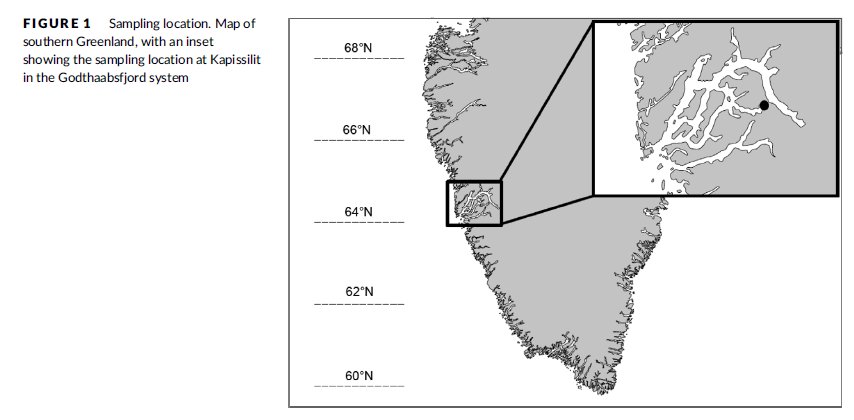Intra-annual variation in feeding of Atlantic cod Gadus morhua: the importance of ephemeral prey bursts
New publication by Peter Grønkjær, Rasmus Ottosen, Thor Joensen, Lee Reeve, Einar E. Nielsen, Rasmus Hedeholm

Abstract:
Seasonal prey bursts are important for the life cycles and energy budgets of many predators. This study documents the diet and, especially, the importance of the ephemeral occurrence of capelin as prey for Atlantic cod (Gadus morhua) in Godthaabsfjord, west Greenland, over an annual cycle. The cod showed clear differences in diet composition on the 11 sampling dates resulting in a spring–summer, late summer–autumn and winter cluster. Moreover, a single sampling date, 12 May, was defined by cod gorge feeding on spawning capelin, which led to average stomach contents 4.3 times higher than the average for the remaining sampling dates. Changes in nitrogen stable isotope values from 22 April to 7 July in cod liver and muscle tissue were used to calculate the consumption of capelin. Based on this, the consumption of capelin varied between 538 and 658 g wet weight for a 1.3 kg cod. Using published consumption/biomass estimates and observed growth rates, the capelin intake corresponds to 10.1%–33.3% of the annual food consumption and accounts for 28.1%–34.5% of the annual growth of the cod. The present study documents the omnivorous feeding mode of Atlantic cod but highlights the utilization and importance of ephemeral prey bursts for the annual energy budget of the cod. It is hypothesized that access to capelin is critical for the postspawning recovery of Godthaabsfjord cod.
